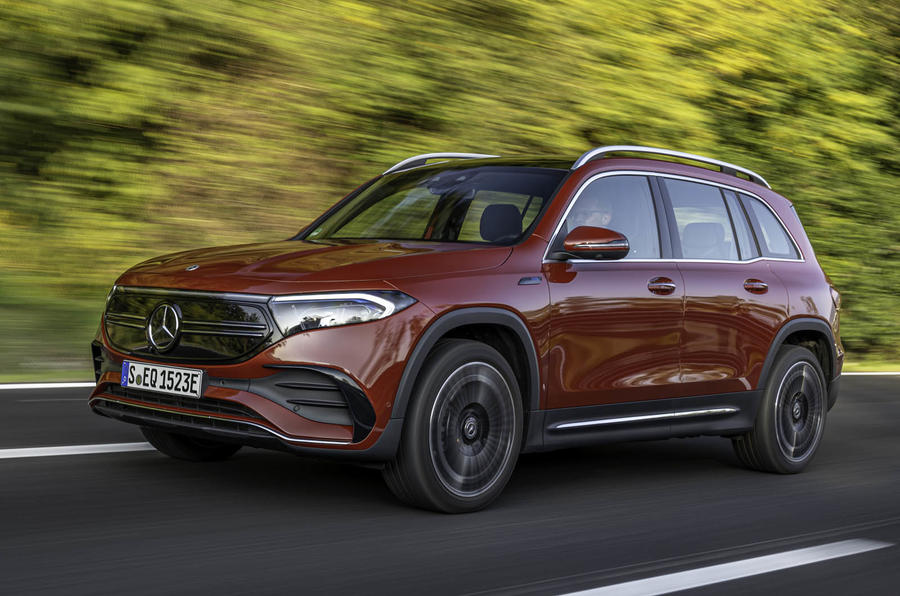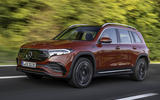Mercedes-Benz isn’t hanging around when it comes to launching electric models. In fact, the new Mercedes EQB is the fifth from its EQ electric car off-shoot, following on from the Mercedes EQC, EQA, EQV and EQS – all within the past two years.
As its appearance suggests, it is based heavily on the Mercedes-Benz GLB. And just like its internal-combustion-engined sibling, the new SUV offers the choice of five seats as standard or seven seats as an option – a factor Mercedes-Benz is banking on to provide it with wider sales appeal than its key premium brand rivals, the Audi Q4 E-tron and BMW iX3.
The EQB and GLB share the MFA (Modular Front Architecture) platform used across Mercedes-Benz’s compact car line-up. It has been modified in a number of areas to accommodate the EQB's dual electric motor driveline, a lithium ion battery and associated power electronics – all of which are mounted low within the high-strength steel and aluminium structure to give it a low centre of gravity.
The modifications also extend to the outer body, albeit on a very subtle scale. To help provide some minor visual differentiation between the EQB and the GLB, Mercedes-Benz has given its latest EQ-badged model a blanked-off grille, a lightly reworked front bumper, EQ badges within the front wings and tailgate, full-width tail-lights and a revised rear bumper without the integral tailpipes of its petrol- and diesel-engined siblings.

Officials suggest aerodynamics played a crucial role in the development of the new model, but drag-inducing elements such as the roof railings and raised ride height remain. Despite this, the addition of improved sealing within the front end and flat panelling within the underbody allow the EQB to equal the drag co-efficient of the outwardly more shapely Audi Q4 E-tron quattro at 0.28.
For now, there are two EQB models. Mirroring the layout of the larger Mercedes-Benz EQC, they feature an asynchronous electric motor up front and a synchronous unit at the rear for four-wheel drive capability. They also receive a lithium ion battery that operates at 420V and has a nominal capacity of 190Ah, giving the new Mercedes-Benz model usable electric energy storage of 66.5kWh.
The price-leading EQB 300 4Matic delivers a combined 225bhp and 280lb ft of torque. It is the more powerful EQB 350 4Matic that we’re in here, though. It offers 288bhp and 383lb ft of torque for a claimed 0-62mph of 6.2sec and a governed 100mph top speed.
Inside, the dashboard design and its switchgear are closely related to the GLB's. The only obvious change is the inclusion of model-specific digital instruments and new energy consumption and energy flow functions for the infotainment system, which operates via the same-generation MBUX system found in all of Mercedes-Benz’s current compact car line-up.


































Join the debate
Add your comment
I don't find any of the Mercedes EQ range attractive at all... and I'm a Mercedes owner and generally a fan of their cars. I'd rather they just made them look like the ICE variants they're based on. The attempts at differentiating them based on aero optimised front ends just makes the cars look frumpy. I don't think that particular wheel design suits the car either.
Seiously UGLY. Lacking any redeeming factor in its design.
What were they thinking?
Why pay premium price for an ugly, mediore, obviously non-premium product?
Mercedes has lost the plot, and I am referring not only to this pointless run of the mill non-entity.